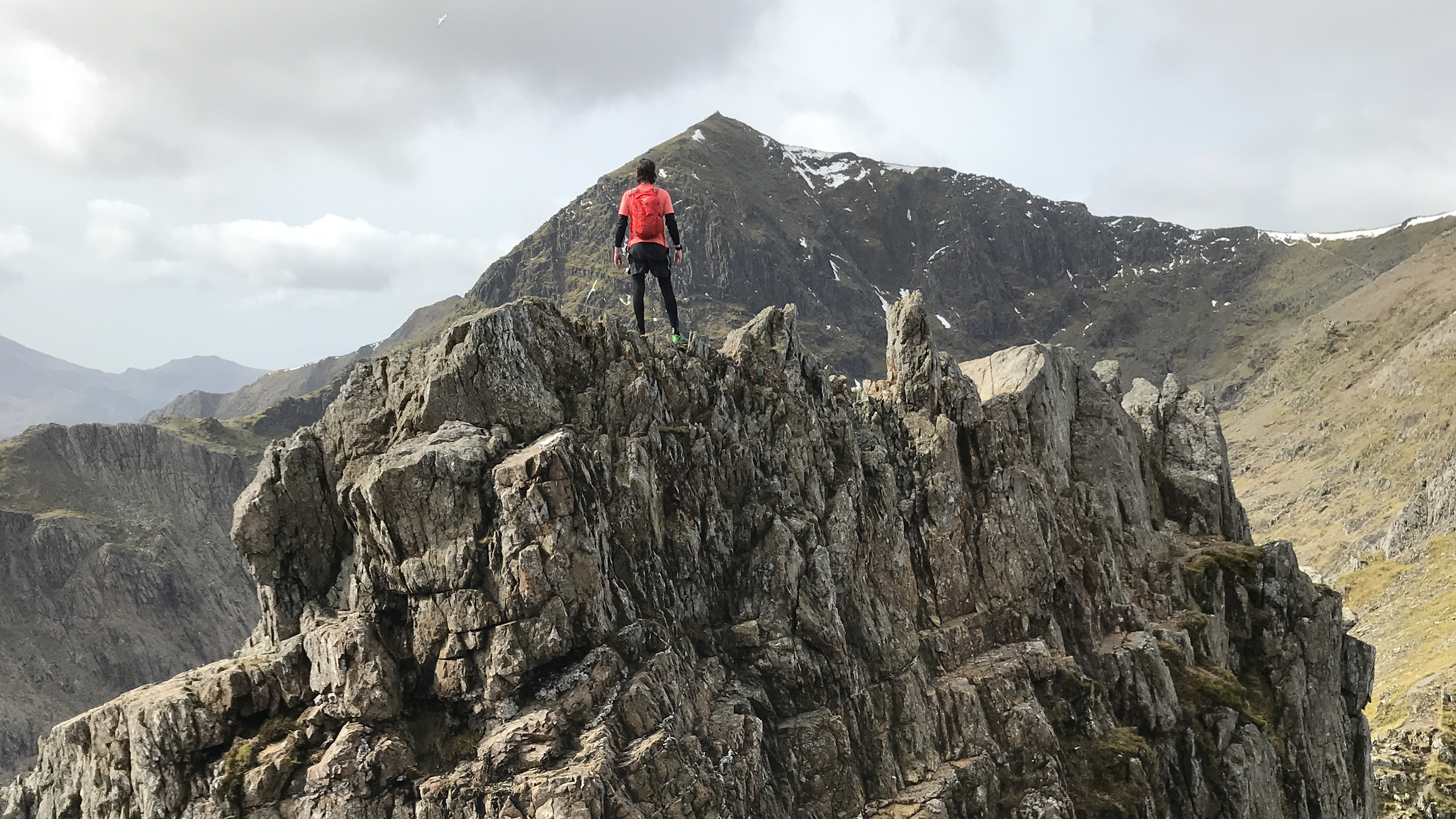
Mountain running challenges are nothing new. Adventurous folk have been getting out, testing themselves in the hills and mountains, tackling seemingly arbitrary challenges, for over a century. If some reports are to be believed, as far back as 1864.
Sometimes, these often-personal undertakings remain exactly that, uniquely personal. After all, that’s the beauty of the great outdoors, the unboundedness of it all, the freedom to express yourself physically in an environment that’s grander than we could ever hope to be.
However, sometimes someone’s adventurous outing catches on, worming its way into the cultural fabric of the mountains that originally witnessed the undertaking. Take the classic Bob Graham Round in England’s Lake District, an idea that evolved from the Lakeland Fell challenge of ticking off as many summits in 24 hours as possible. In 1932, Keswick resident Bob Graham managed a traverse of 42 fells, starting and finishing at the town’s now iconic Moot Hall. There’s no way that Bob could have known his efforts would go on to create a cult phenomenon, the quintessential fell running (a cult phenomenon in itself) challenge.
Mountain running challenges are a way of testing yourself against the high places. They’re markedly different to trail races – there’s more of a spirit of collaboration, community and cooperation than there is of competition. Above all, they remain deeply personal endeavors that force you to learn more about yourself and how to handle yourself in the wild places.
My first mountain running challenge
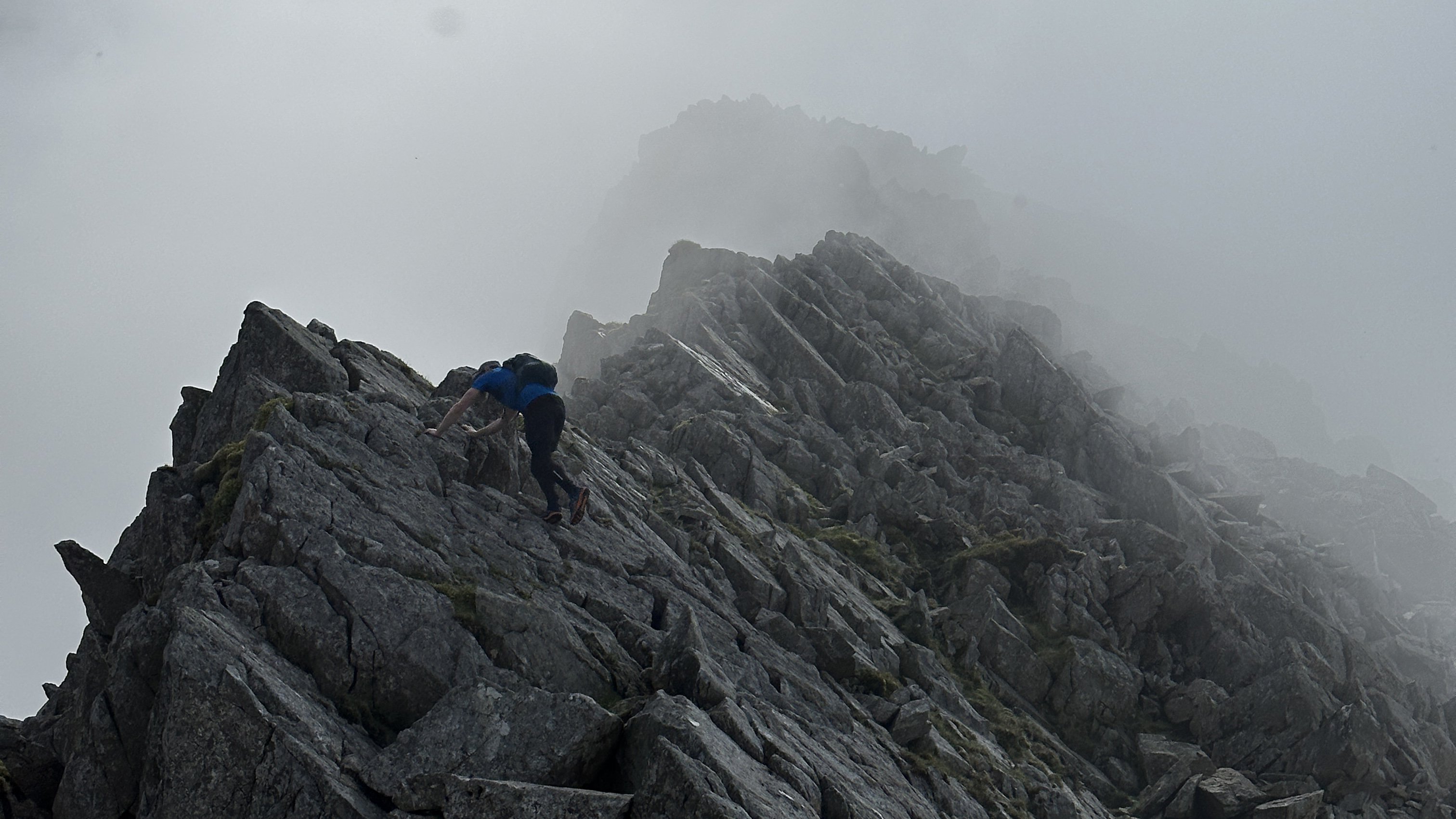
The first mountain running challenge I decided to take on was born in 1995 when a member of the London Mountaineering Club set out to tackle the Welsh 3000s, starting and finishing at the club hut, in the shadow of Wales’ highest peak, Yr Wyddfa (also known as Snowdon). Since then, at least 50 teams or individuals have also completed the round, which has become known as the Champagne Challenge. The idea being that if you get around in less than 16 hours, you get a hard-won bottle of bubbly.
What the devil is the Welsh 3000s, you ask? Well, all 15 of Wales’ 3,000-foot peaks are clustered in a relatively small area, spread across three distinct mountain ranges: the Yr Wyddfa group, the Glyderau and the Carneddau. The traditional Welsh 3000s route entails visiting all 15 peaks in a single journey and is popular with both runners and hikers. The terrain is fascinating, with razor sharp ridges on the Yr Wyddfa massif, blocky scrambling terrain on the Glyderau and rolling, runnable and riotously enjoyable high ground on the Carneddau.
What makes the London Mountaineering Club’s Champagne Challenge that bit more challenging is that you have to start and end in the same place, which greatly adds to both the distance and the elevation gain required to get around. If – and it’s a big if – tackled efficiently, it should entail around 33 miles with 13,000 feet (4,000 meters) of ascent and descent.
Things I wish I’d learned before my first mountain running challenge
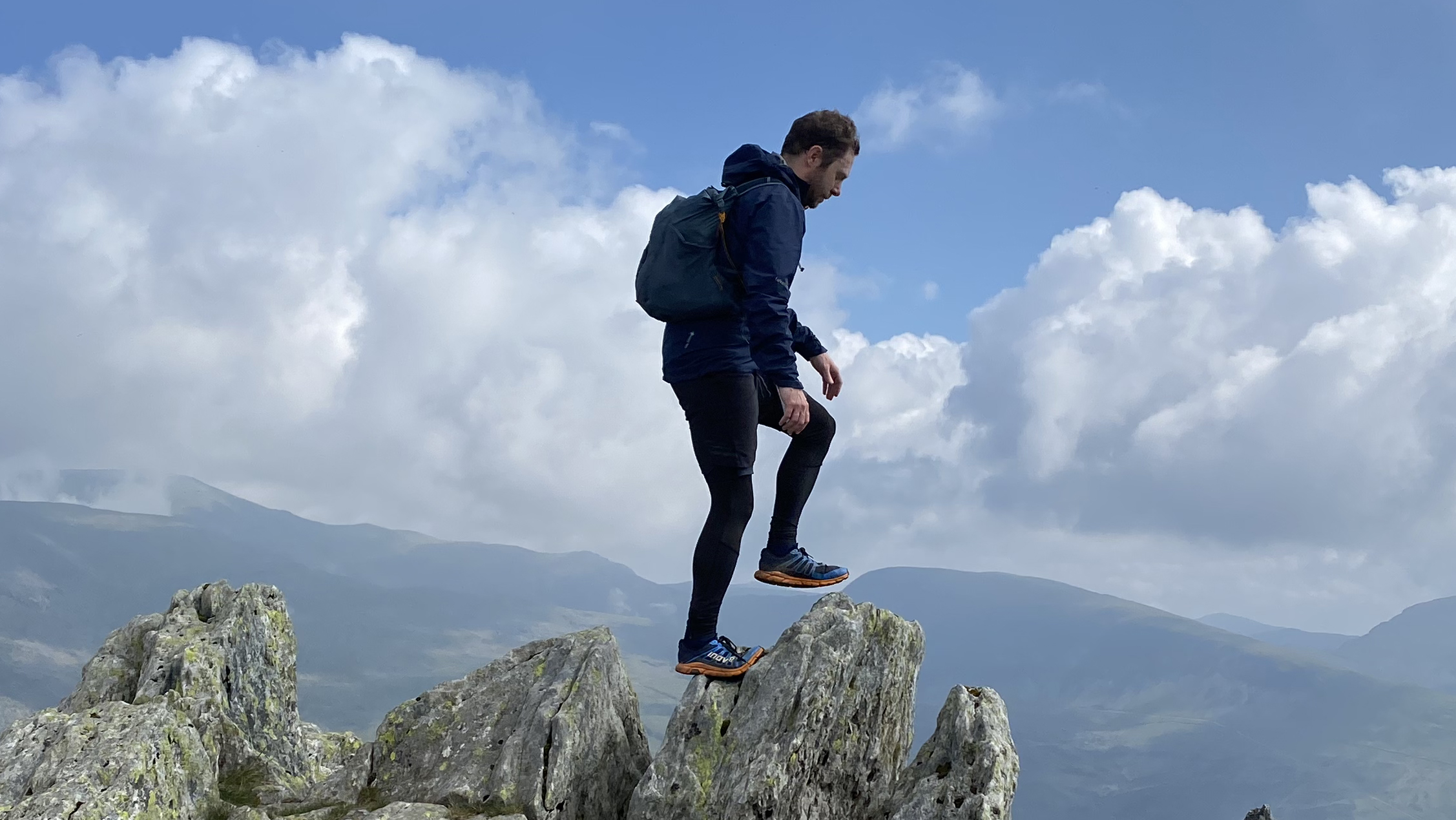
I came to the Champagne Challenge as a newbie to mountain running challenges. My first attempt, while successful, taught me a whole load about approaching these kinds of challenges. Here are 5 key takeaways:
You’ll care about your time – Even if you think you don’t, you will.
Follow lines not trails – Trails aren’t necessarily the fastest point between A and B.
Eat and drink a lot – Keeping up with the calories you’re burning is vital for both performance and recovery.
Place grab bags – Eliminate the need to carry too much at any one time by placing grab bags along the route.
Consider assistance – Crew or other runners can help with fuel, morale, navigation and pace.
Meet the expert
You will care about your time

I went into the Champagne Challenge with a mindset of simply enjoying the day and not pushing myself too hard. On one hand, this is probably a healthy way to approach this sort of thing, especially if you’re not too much of a competitive person. I didn’t plan my route to the Nth degree and I took loads of photos and videos while I was out there – doing some exciting sections twice just for the footage. I was keen to make a film for my YouTube channel at the time, though the visually uninspiring, overcast conditions meant that this didn’t happen in the end. In short, I wasn’t in much of a rush and I got around in a respectable 20 hours and 31 minutes.
The problem here is that, I am a competitive person. I can’t help but reflect on the experience and wonder: how fast could I do this if I really put my mind to it? If I really pushed myself? Maybe it’s pride, maybe it’s ego, maybe I’m just curious to see how the best version of myself would fare, especially now that I've learned the lessons I'm sharing here.
The point is, even if you don’t think it to begin with, if you’re taking on this kind of challenge and you’re a competitive person, you will care about your time. After five years, I’m yet to return to the Champagne Challenge – though Covid, getting married and having a young family have all played their part – but I’ve no doubt I will return at some point…
Follow lines not trails
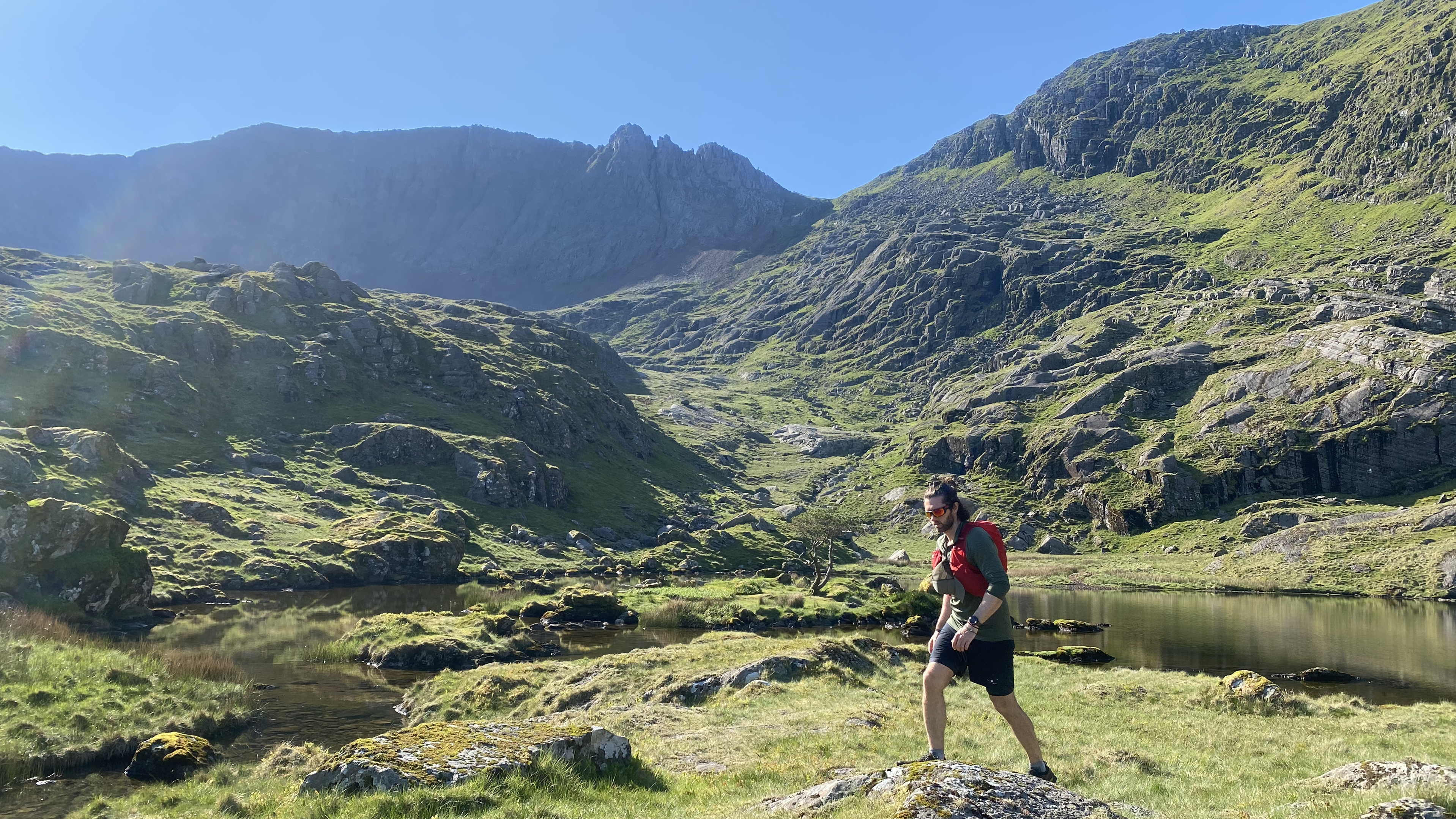
And when I do return, one of the major changes I’ll make is the way I navigate. As mentioned, I didn’t plan my first adventure to the Nth degree. I was fairly relaxed about it, as these were mountains that I knew fairly well. My plan had been to follow the main trails and have a grand day out.
However, if it’s speed you’re after, following trails may not be the fastest way between any given point A and any given point B. Instead, study the contours on the map beforehand and consider two main factors: what is the most direct way that requires the least change in elevation. This is very much a fell running, rather than trail running approach. By going off-piste, I’d have shaved both time and effort off the attempt. With fresher legs, I’d have been quicker and less fatigued in the final stages of the effort.
Next time, I’ll plot my route carefully using a navigation app and download the trace to my GPS watch. That way, I’ll be able to stick to the most efficient lines. After all, every little helps when you’re taking on something this big.
Eat and drink a lot
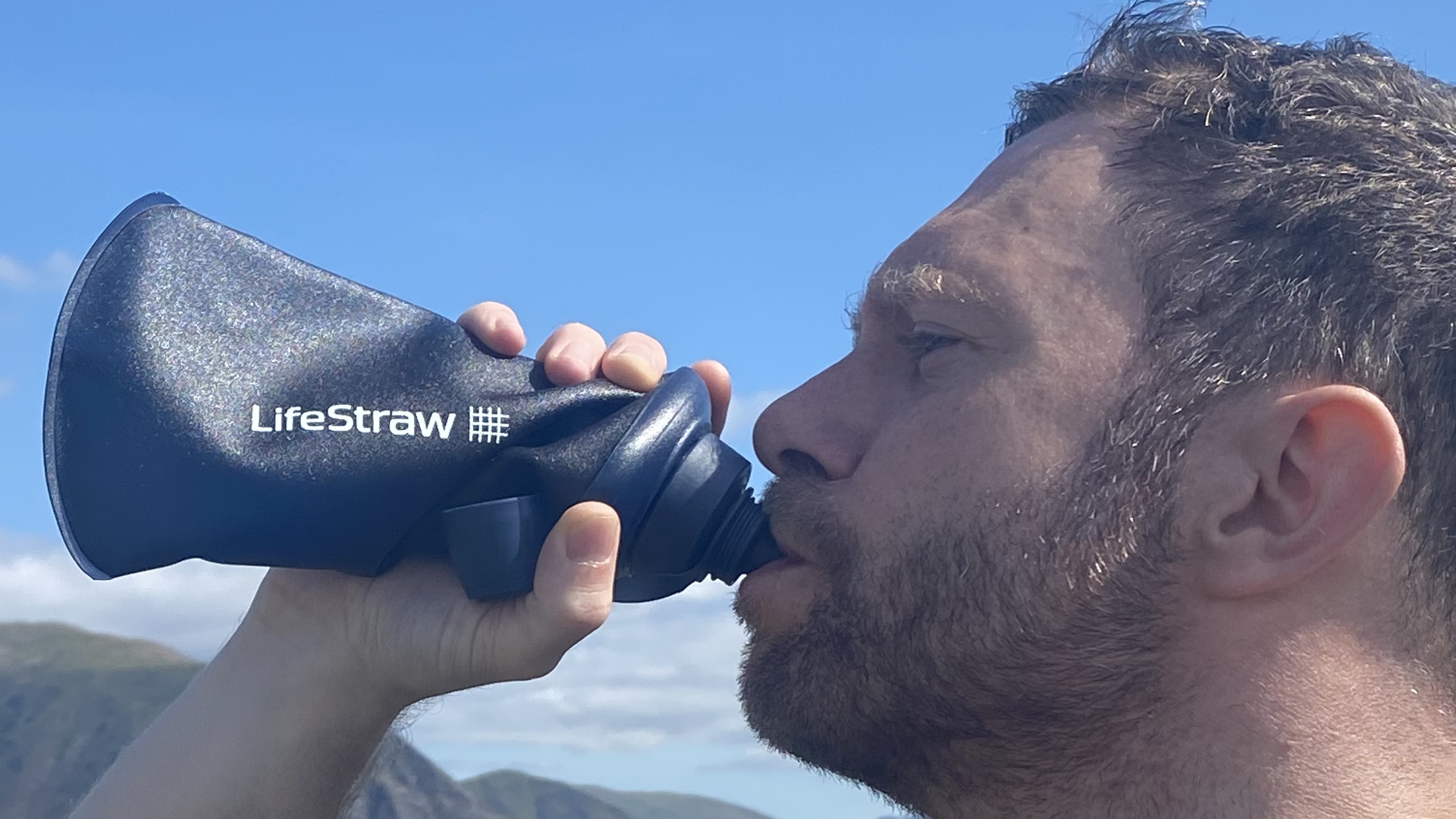
As I slumped, exhausted, into the club hut after 20+ hours on my feet, an angel appeared with a huge bowl curry, offering me a beer, a glass of champagne and a tea all at once. In a daze, I accepted them all, before collapsing onto the cushioned benches in the communal area. I absolutely wolfed the curry down and I think I ate another bowl too, though my memory is hazy. What I do know is that I was starving with a capital STARV.
The next day, I hungrily lapped up my Strava stats, as you do after such an effort. An estimated 5,030 calories had been spent during my effort, on top of the 2,000 to 3,000 calories I’d have burned anyway just having a normal day. So, let’s say 8,000 calories: equivalent to around eight entire 14-piece KFC Bargain Buckets.
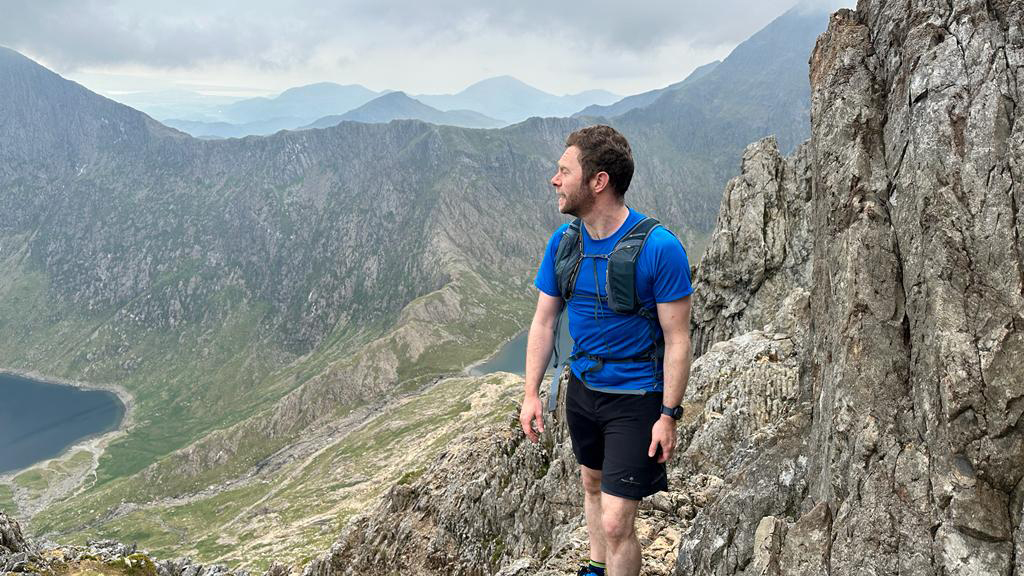
Now, I certainly wouldn’t recommend KFC as either fuel for running or as a good thing to eat in the first place – I’m off Ultra Processed Foods, don’t you know – but when you compare a fleet or Bargain Buckets against the meagre rations I took out on the run, it becomes clear suddenly why I felt a tad flat during the backend of the challenge. From memory, I took two pre-packaged grocery store sandwiches, around four chocolate bars, two bags of Haribo Starmix and a couple of packets of crisps. This roughly equates to 2,700 calories. It was much more than I’d usually take on a mountain adventure, but in this case would have left me with a deficit in the region of 5,000 calories.
I undertook the challenge on the Saturday. I was severely fatigued and remember having an awful headache during the journey home on the Sunday. Back at work on Monday, I was a zombie. Recovery took weeks. So, it was clear that, next time, I’d need to take on more fuel.
Hydration wasn’t such a problem, as I filled up my soft flasks at mountain streams with a filter. However, on a really hot day, I’d have had to drink much more.
But how to get the balance right between having enough food and drink available while still being light enough to enjoy running in the mountains. Well…
Place grab bags
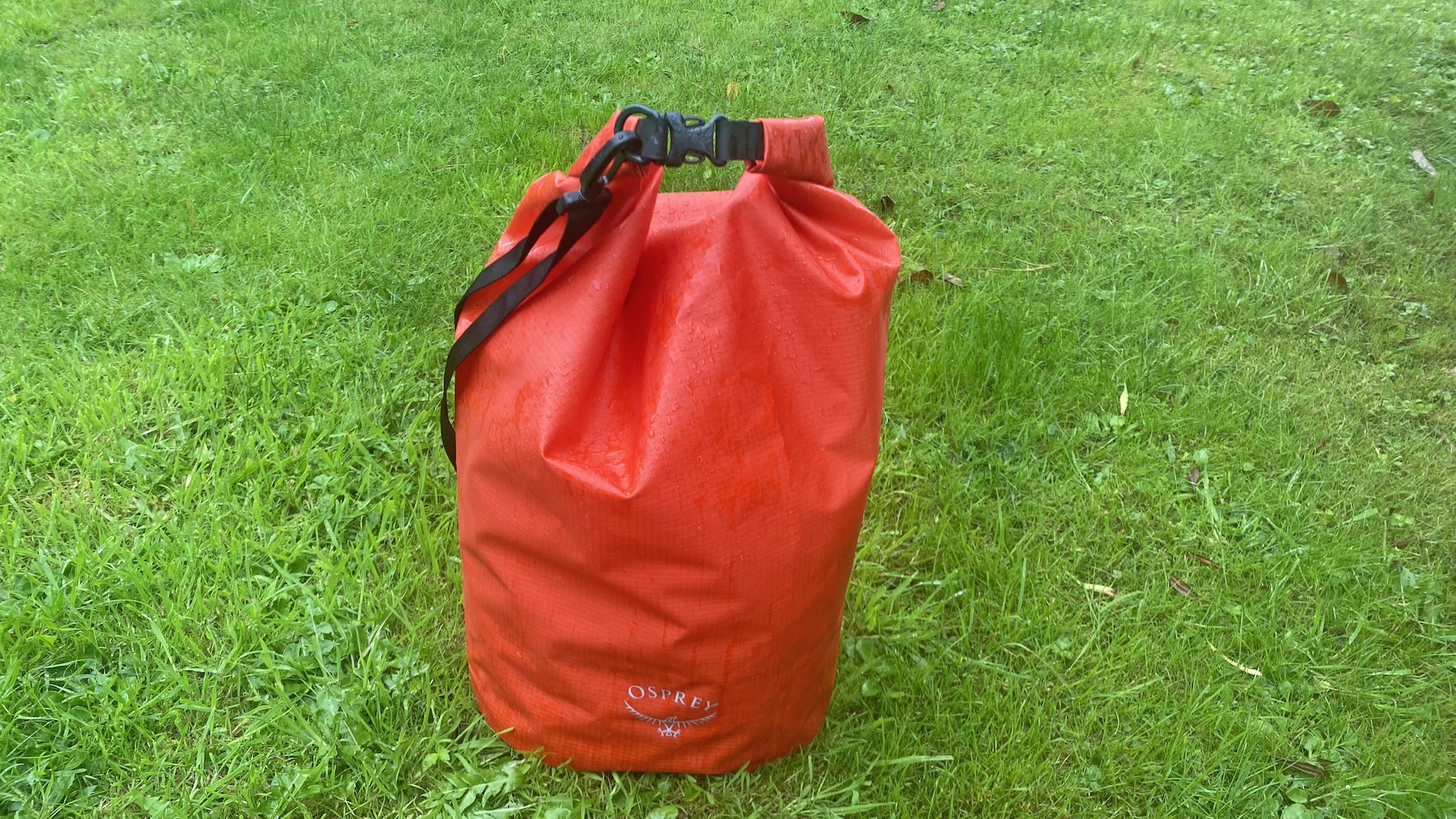
If you’re putting time aside to train for and attempt a big mountain challenge, you might as well take a little more and place grab bags at strategic points along the route beforehand. This is the answer to the conundrum of how to fuel enough without weighing yourself down in the first place. I didn’t do this on my attempt and it’s certainly something I’d change next time around.
Depending on where you’re running, secure dry bags are a good shout, as they’ll keep your food dry and protected. Of course, it’d still be worth placing them so that they’re as sheltered and hidden away as possible. Believe it or not, ravens have been known to raid backpacks for food, so I wouldn’t put it past these intelligent corvids to steal your mile-20 sugary pick-me-up if given the chance. Dry bags probably wouldn’t stop a bear either and you don’t want to come face to face with one of those in an exhausted, semi-hallucinatory state. In this case, an air-tight lockable box is the better bet – though you’ll have to return to the site after your run to carry it out.
It's not just food that you can use grab bags for either. Dry clothes, socks and shoes, power banks, head lamps, pain killers and, of course, water can all be stashed for use. If you know the terrain in one section of your run is going to be markedly different to another, you might want to change your style of footwear, particularly if there’s a long road or gravel section.
Consider assistance
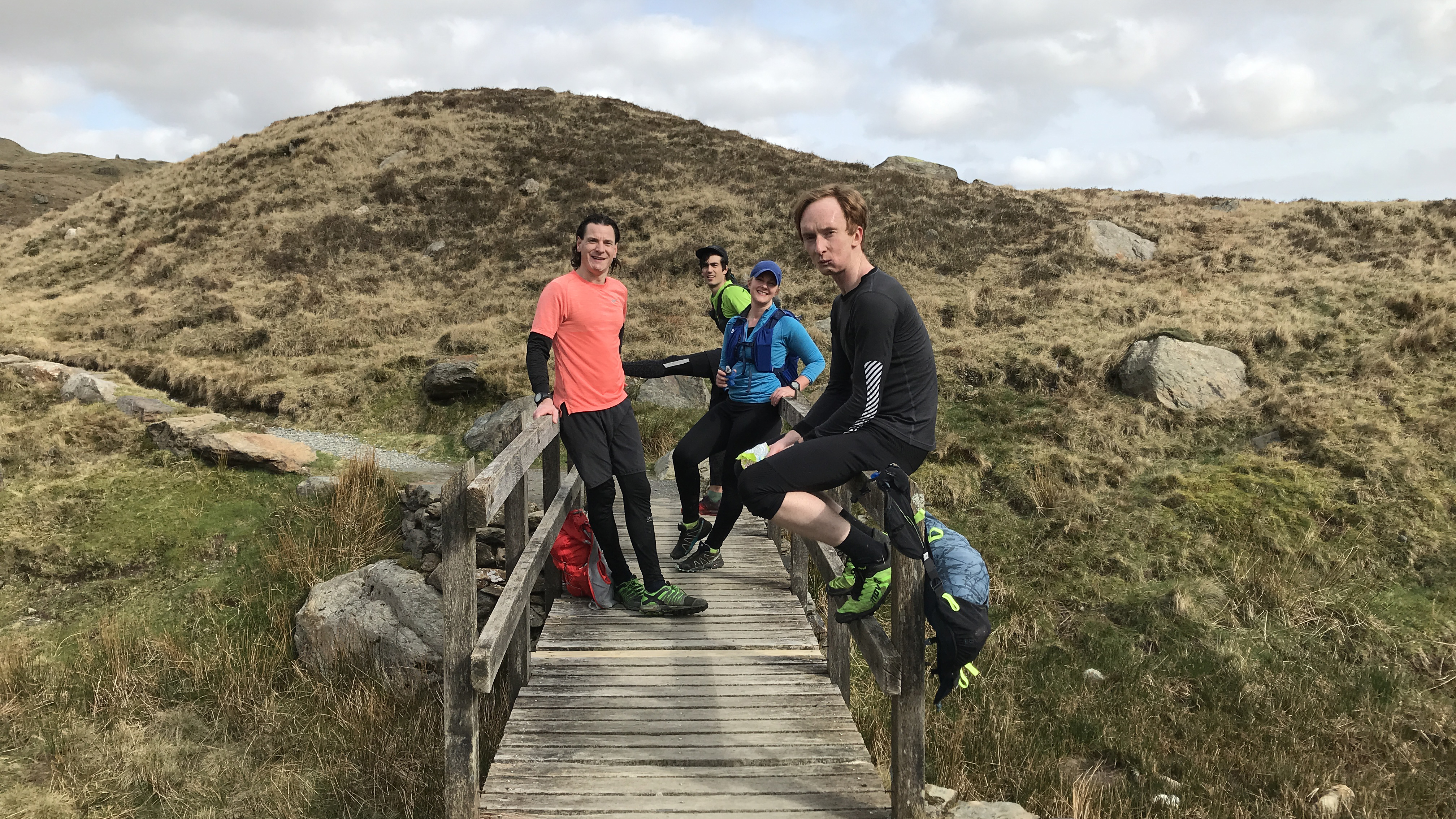
While some are attracted to the idea and sense of achievement that comes with a self-supported adventure, others value the moral support of company in one form or other. I did my Champagne Challenge in a totally self-sufficient manner but if the offer of help was there next time, I’d probably take it – certainly in terms of checking in at strategic points and for refuelling.
Assistance can come in a variety of forms. A crewed approach entails having friends or family who meet you at pre-defined points – usually road crossings or passes – along the route. Reaching these familiar faces can be a real morale boost and they can support with fuelling, injury niggles and motivation.
Then, there’s the option of having others run with you, either for the entire effort of for different sections. This kind of help is commonplace on popular challenges like the Bob Graham in the Lake District. It can be nice to have someone to talk to, to offload onto, to carry some of your kit, or just as a shoulder to cry on when it all gets a bit much. It may be that your challenge takes place in an environment you’re not that familiar with and a companion who knows the way can take the navigation burden away.
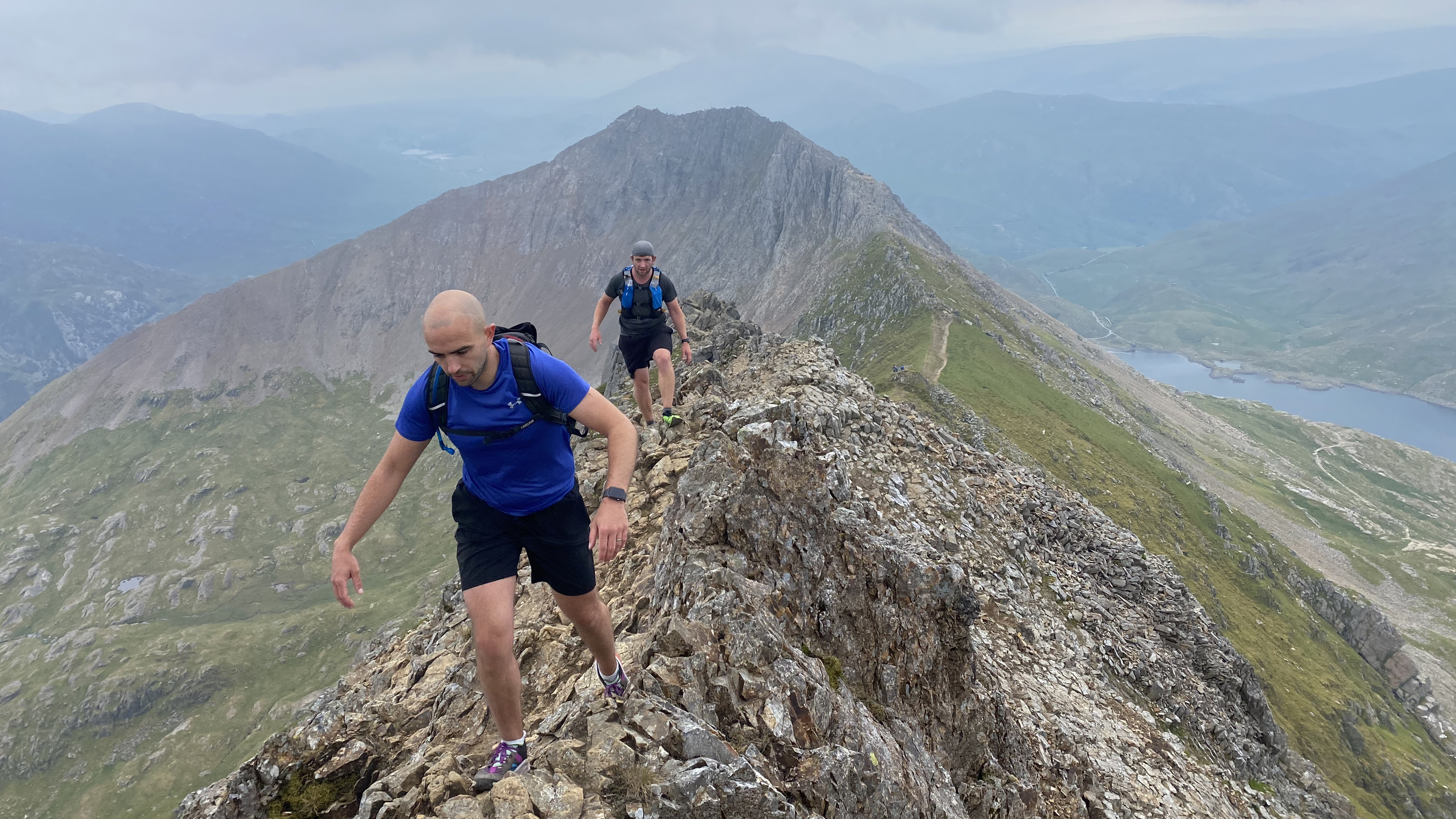
Finally, if you’re really serious about time, a pacer can help you stay on target and means that you won't have to be constantly checking your watch, allowing you to concentrate on the purity and joy of the mountain running.







